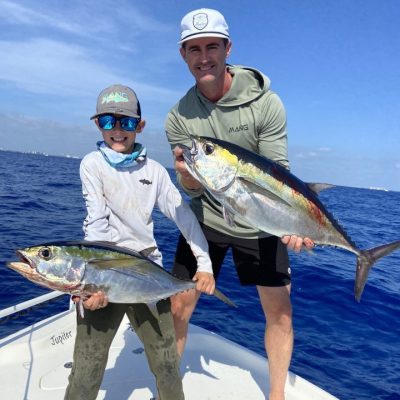Introduction
Welcome to Top Angler Magazine, where we provide you with the best fishing tips and expert advice to help you become a master angler. In this article, we will focus on the art of jigging and how you can perfect your skills in this angling technique. Whether you are a seasoned angler looking to improve your jigging game or a beginner eager to learn, our comprehensive guide will provide you with all the information you need. From fishing gear reviews to sport fishing guides, we have got you covered. So grab your fishing rod and let's dive into the world of jigging!
1. Understanding Jigging: The Basics
Jigging is a technique that involves manipulating a weighted lure, known as a jig, in the water to attract fish. It is an effective method for catching a wide variety of species, including bass, walleye, and trout. To master this technique, it is important to understand the basics:
1.1 What is Jigging?
Jigging involves vertically dropping the lure into the water and then jerking it upward in an erratic motion to mimic the movement of prey. This action triggers predatory instincts in fish and entices them to strike.
1.2 Choosing the Right Jig
Selecting the right jig is crucial for successful jigging. Consider factors such as weight, color, and shape when choosing a jig that matches the prey fish in your target area.
1.3 Essential Gear for Jigging
To effectively jig, you will need specialized gear. Invest in a quality fishing rod with a sensitive tip and medium-heavy power for better control and sensitivity. Pair it with a high-quality spinning reel and braided line for optimal casting distance and strength.
2. Mastering Angling Techniques: Tips and Tricks
Now that you have a basic understanding of jigging, let's explore some advanced techniques to help you become a master angler:
2.1 The Lift-and-Drop Technique
One of the most popular jigging techniques is the lift-and-drop. Start by lifting the rod tip slowly to raise the jig a few feet off the bottom, then allow it to fall back down freely. This action mimics the movement of injured prey and attracts fish.
2.2 Speed and Cadence
Experiment with different speeds and cadences when jigging. Some days, fish may prefer a slow, subtle movement, while on other days, they may be more responsive to a fast and aggressive approach. Vary your jigging rhythm until you find what works best.
2.3 Fluttering Technique
The fluttering technique involves imparting a side-to-side motion to the jig as it falls through the water column. This erratic movement simulates a wounded baitfish and can trigger aggressive strikes from predators.
3. Fishing Gear Reviews: Finding the Perfect Jigging Equipment
Having the right gear is essential for successful jigging. Here are some top-rated products that will enhance your angling experience:
3.1 XYZ Jigging Rod
The XYZ Jigging Rod is specifically designed for vertical jigging techniques. Its sensitive tip allows you to detect even the slightest nibbles, while its sturdy construction provides enough backbone to handle large fish.
3.2 ABC Spinning Reel
The ABC Spinning Reel offers smooth drag performance and excellent line capacity, making it an ideal choice for jigging enthusiasts. Its lightweight design ensures fatigue-free fishing sessions.
4. Expert Angler Advice: Pro Tips for Mastering Jigging Skills
We reached out to some expert anglers who shared their advice on mastering jigging skills:
4.1 Angler A: "Practice Patience"
Patience is key when jigging. Allow the jig to sink to the desired depth, and then work it slowly and methodically. Give the fish enough time to inspect and strike your bait.
4.2 Angler B: "Pay Attention to Depth"
Understanding the depth at which the fish are holding is crucial for successful jigging. Use a fish finder or pay attention to visual cues such as diving birds or baitfish activity to determine the optimal depth.
5. Sport Fishing Guides: Exploring Jigging Hotspots
Looking for some exciting locations to put your jigging skills to the test? Check out these renowned fishing destinations:
5.1 Lake X
Lake X is famous for its exceptional bass fishing opportunities. The clear water and abundant structure make it an ideal spot for jigging enthusiasts.
5.2 River Y
River Y is known for its trophy walleye population. Jigging along the riverbanks and drop-offs can yield impressive catches.
6. Angler Lifestyle: Embracing the Jigging Culture
Jigging is more than just a fishing technique; it's a lifestyle. Joining a community of fellow anglers who share your passion for jigging can enhance your angling experience.


7. Fishing News: Stay Up-to-Date with the Latest Trends
Stay informed about the latest advancements in jigging techniques, gear, and regulations by subscribing to fishing news publications or following online forums dedicated to angling.
8. Seasonal Fishing Tips: Adapting Your Jigging Techniques
Different seasons require different approaches when it comes to jigging. Here are some seasonal tips to help you adapt:
8.1 Spring Jigging Tips
During spring, fish tend to move closer to shallow areas for spawning. Target Seasonal Fishing Tips these areas with lightweight jigs and slow presentations.
8.2 Summer Jigging Tips
In the summer months, fish often seek deeper water to escape the heat. Use heavier jigs and faster retrieves to reach them.
Frequently Asked Questions
Q: What is the best time of day for jigging? A: The best time for jigging varies depending on the species you are targeting. However, early morning and late evening tend to be productive times.
Q: Can I use jigging for saltwater fishing? A: Absolutely! Jigging is a versatile technique that can be used in both freshwater and saltwater environments.
Q: How do I know which size jig to use? A: The size of the jig depends on the depth you are fishing and the size of the prey fish in your target area. Experiment with different sizes until you find what works best.
Q: Are there any specific weather conditions that favor jigging? A: While different weather conditions can affect fish behavior, some anglers find that overcast days or days with light rain tend to be more favorable for jigging.
Q: Can I jig from a boat or do I need to be onshore? A: Jigging can be done from both boats and shorelines. It all depends on your preference and the fishing spot.
Q: How long does it take to become proficient at jigging? A: Becoming proficient at jigging takes practice and experience. With dedication and patience, you can become a master angler in no time!
Conclusion
Mastering jigging techniques requires time, effort, and a deep understanding of fish behavior. By following our expert advice, investing in quality gear, and staying up-to-date with the latest trends, you will be well on your way to perfecting your jigging skills. Remember, fishing is not just a sport; it's a lifelong journey of learning and exploration. So get out there, embrace the angler lifestyle, and enjoy the thrill of jigging!